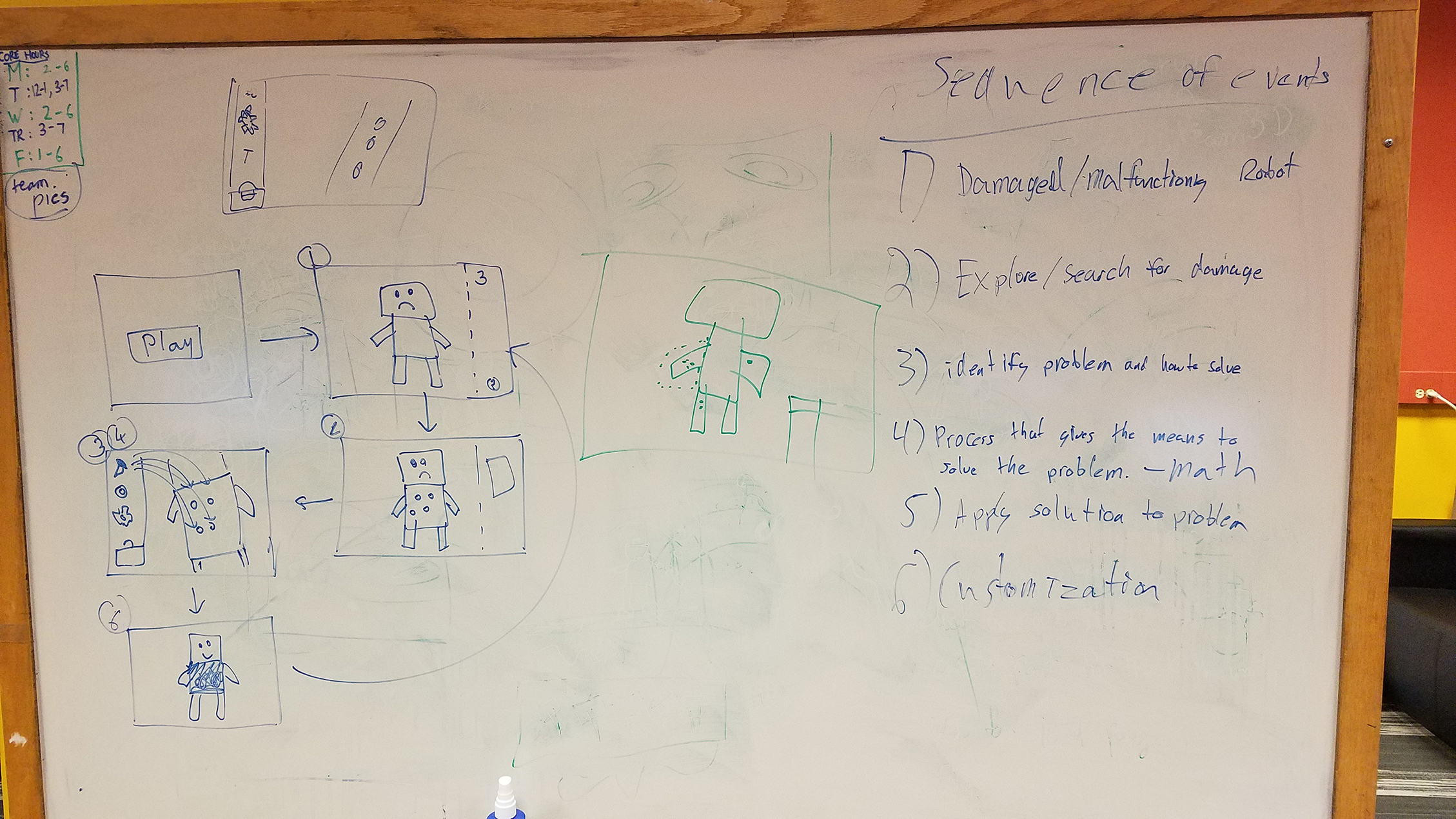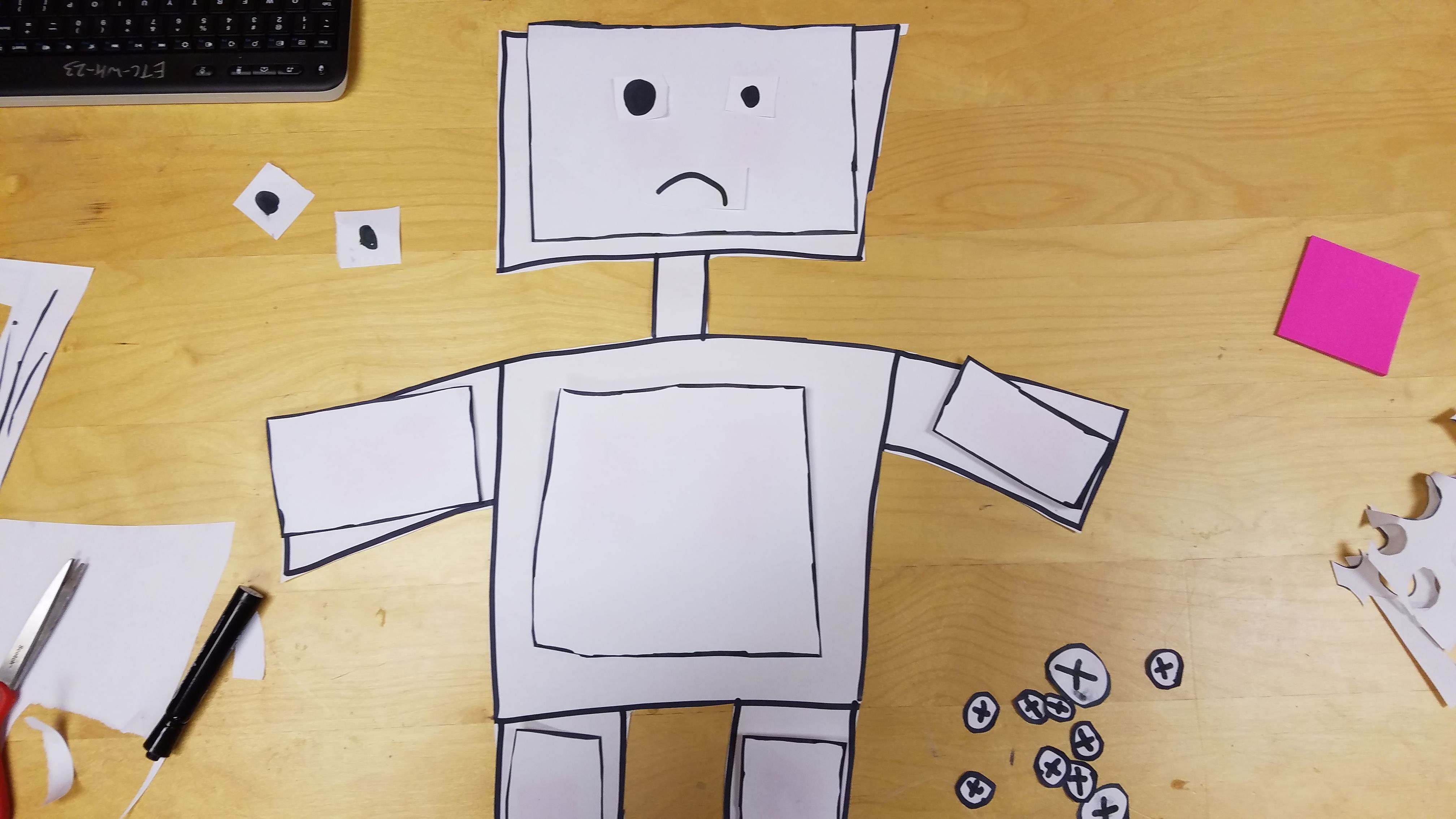This week, we had a skype meeting with our client, met with various faculty, had a brainstorming session, and are now pushing forward with an idea.
Client Meeting
Early in the week, we finally had a chance to sit down with Tracy Ross, a teacher and our main point of contact at the East Franklin School. We asked her a series of questions:
- For how long do you teach math each day?
- Can we get a video of the math class?
- What math concepts are the most difficult for the children to understand? Are there any specific trouble areas?
- Could the team have access to the lesson plan?
She told us that the class generally runs from forty to fifty minutes per day,; she has sent us a video displaying her teaching method (which we, unfortunately, cannot share here); the children have weak math fluency across the board, but she specifically mentioned trouble with the four main operators; finally, she has promised to share her lesson plan.
We shared with Tracy a series of concepts, which can be found here. Tracy seemed to like aspects of all the ideas. As a team, we feel that we won’t get much specific feedback in terms of what are client likes or dislikes about our ideas. Therefore, we simply plan on taking into account our own evaluation of the client’s true wants and needs as we move forward with our prototype.
Brainstorming
After our client meeting, ETC faculty member and educational network coordinator, John Balish, reached out to the team to conduct a brainstorming session.

Each team member had five minutes to think of as many ideas as possible in relation to areas of theme, mechanics, story, and character. After selecting our favorite ideas we came up with the following idea:

The basic story for this idea is that the player is a repairman tasked with fixing steampunk style robots. The main gameplay loop is as follows:
- The player is presented with a malfunctioning robot.
- The player can explore the robot, open panels and remove parts, to find the source(s) of the malfunction.
- The player identifies the problem, and the means to solve it.
- The player utilizes math to create the solution to the problem. This can be as simple as counting screws, to as complex as combining different amounts of different materials together to create proper tools.
- The player applies the found solution and fixes the malfunction.
- The player has a chance to engage in customization of the robot, such as changing colors or adding parts.

Currently, we are creating a digital prototype and have a paper prototype prepared for playtesting. Our plan is to have the digital prototype finished by next Friday, where we will go to the East Franklin School to conduct a playtest.
Challenges
Our current challenges are as follows:
- Complete a playtest ready digital prototype in one week.
- Ready playtest documentation.
- Brainstorm and test additional ways of unobtrusively including math concepts into the game.
Next Week
For next week we plan on:
- Continuing work on our digital and paper prototypes.
- Traveling to East Franklin School to conduct a playtesting session.
- Solidify are ideas for including math concepts.